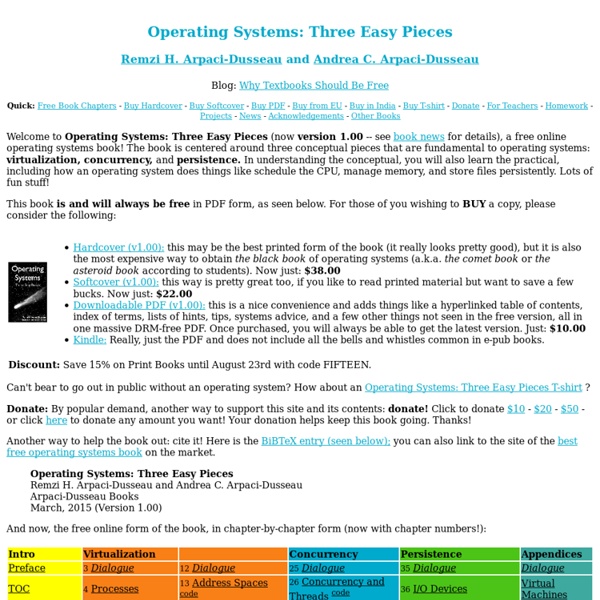Harmonic
The nodes of a vibrating string are harmonics. Two different notations of natural harmonics on the cello. First as sounded (more common), then as fingered (easier to sightread). A harmonic of a wave is a component frequency of the signal that is an integer multiple of the fundamental frequency, i.e. if the fundamental frequency is f, the harmonics have frequencies 2f, 3f, 4f, . . . etc. The harmonics have the property that they are all periodic at the fundamental frequency, therefore the sum of harmonics is also periodic at that frequency. Characteristics[edit] Harmonics and overtones[edit] An overtone is any frequency higher than the fundamental. This article incorporates public domain material from the General Services Administration document "Federal Standard 1037C". Harmonics on stringed instruments[edit] Playing a harmonic on a string Table[edit] Artificial harmonics[edit] Other information[edit] See also[edit] References[edit] External links[edit]
Everything you need to know to install SteamOS on your very own computer
True to its word, Valve has released a beta version of SteamOS, the Linux-based operating system that it will use to power its living room Steam Machine consoles. The release coincides with a lucky group of 300 public beta testers who were selected to actually receive Steam Machines to test on—the rest of us can still use the OS, but we'll have to bring our own hardware. Valve had previously recommended that users who aren't "intrepid Linux hackers" should wait a few more months before trying out SteamOS, but that's not going to stop Ars from barreling head first into the midst of things! We downloaded the OS as quickly as we could after it went live and spent some time getting it whipped into shape on fresh hardware. Contrary to Valve's warning, the install wasn't complex or scary at all—though if you've never installed Linux before, it might take you a bit out of your comfort zone. The hardware Since we didn't receive a Steam Machine to test, we set out to build our own. Lee Hutchinson
5 Cool Unix Hacks For Fun and Productivity — Nathan LeClaire
In my workflow I am always looking for ways to be more productive, and to have more fun while developing. There’s nothing quite like the feeling of flying through a sequence of commands in bash that you know would take your peers twice as long to execute. Have you ever : Raged silently at a coworker for spamming the left arrow key to get to the beginning of their terminal prompt when they could have just pressed CTRL + A ? If so, then these tips might be for you. DISCLAIMER: There’s an admitted bias towards vim, git, and the terminal here. If you’ve worked with git for any non-trivial amount of time you hopefully have come across the notion of making atomic commits. However, what happens when you are working within one file that contains multiple unrelated changes, or changes that you’d like to split up into more than one commit in case you need to revert them separately? The -p (standing for patch) flag for git add is ridiculously useful for these kinds of cases.
MoonOS Linux - Linux Freedom
4 - Asturix
Zenwalk
Zenwalk is a Linux distribution founded by Jean-Philippe Guillemin. It was originally based on Slackware. Since its creation, the distribution has become very different from Slackware in most regards while still maintaining compatibility with its binary packages. Zenwalk aims to be a modern and multi-purpose Linux distribution by focusing on Internet applications, multimedia and programming tools.[2] Additionally, Zenwalk comes with many specialized tools, designed for beginner through advanced users as it offers system configuration via both graphical and command-line operations. History[edit] Zenwalk was originally called Minislack up to version 1.1, taking its current name with version 1.2 released 2005-08-12. Aims[edit] Community[edit] The Zenwalk Project has a forum that allows users and developers alike to post their issues, concerns and praise. Zenpanel, a system configuration utility. Package management[edit] Zenwalk's netpkg in its GUI guise, xnetpkg. Supported architectures[edit]
N O D E
This tutorial will teach you how to create your own handheld linux terminal with built in screen, QWERTY thumb keyboard and battery. It has four passive USB ports for expansion and extra connectivity. It’s super portable and is about the size of a Nintendo DS (if slightly thicker). I initially made it because I thought it’d be cool to fit down into such a small form-factor, but it also has some interesting purposes. It’s basically a full handheld linux system that can do almost everything a normal sized computer can do. Almost all the design choices here are made entirely out of necessity for space. - Front view- Opened flat- Closed- Size comparison against 11inch Macbook Air - Soldering iron / solder- Desolder pump- A fine-ass file- Power drill- Small hacksaw blade- Solder wick/tape (optional)- Wire cutters / strippers- Needle nose plyers (optional)- Hot glue gun (optional)- Insulating tape- Helping hands stand (optional) Step 1. Step 2. sudo dpkg-reconfigure console-setup sudo reboot



